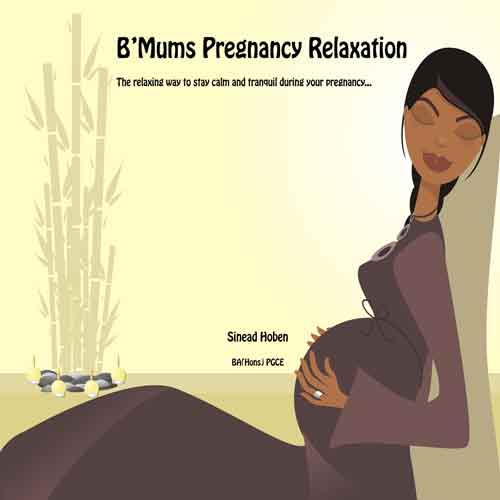Using a Breastfeeding Pump
Introduction
A lactation aid is a device that allows a breastfeeding mother to supplement her baby with expressed breastmilk, formula, glucose water with added colostrum or glucose water without using an artificial nipple.
The early use of an artificial nipple may result in the baby becoming "bottle spoiled" or "nipple confused" because it interferes with the way a baby latches on to the breast. Actually, the baby is not confused. The baby knows exactly what the score is. If he goes to the breast and gets little milk and slow flow and then gets a bottle with rapid flow, especially in the first few days, most can figure that one out fairly quickly.
The better a baby latches on, the easier it is for him to get milk, particularly if the mother’s supply is low. In the first few days, there is not a lot of milk, but there is enough, if the baby gets what’s available. But, because of a poor latch, if the baby does not get milk well from the breast, he may fall asleep or push away from the breast when the flow of milk slows down. Thus the baby may refuse the breast, be very fussy at the breast, gain weight poorly, lose weight or even become dehydrated in the first week. The mother may develop sore nipples. Though artificial nipples do not always cause problems, their use when things are already going badly will rarely make things better, and usually make things worse. I do not believe that the “newer bottles nipples” are any better than the old ones. The lactation aid is by far the best way to supplement, if the supplement is truly necessary. (However, proper latching on of the baby usually allows the baby to get more milk, and thus it is often possible to avoid the supplement). It is better than using a syringe, cup feeding, finger feeding or any other method, since the baby is at the breast and breastfeeding. Babies, like adults, learn by doing. Furthermore, the baby supplemented at the breast is also getting breastmilk from the breast. And there is more to breastfeeding than breastmilk.
Why is the lactation aid better?
Babies learn to breastfeed by breastfeeding
Mothers learn to breastfeed by breastfeeding
The baby continues to get your milk even while being supplemented
The baby will not reject the breast, which is very possible if supplementing off the breast
There is more to breastfeeding than the breastmilk
What is a lactation aid?
A lactation aid consists of a container for the supplement—usually a feeding bottle with an enlarged nipple hole—and a long, thin tube leading from this container. Manufactured lactation aids are also available and are easier to use in some situations, but not necessarily. Manufactured lactation aids are particularly useful when the need for a lactation aid arises in an older baby, when a mother needs to supplement twins, when the need for a lactation aid will be long term, or whenever difficulty arises using the improvised lactation aid. Though the manufactured lactation aid is not inexpensive, the cost is about equal to two weeks of the usual milk based formula.
Please Note: Using a tube with a syringe, with or without a plunger, instead of the setup mentioned above, seems unnecessarily complicated and adds nothing to the effectiveness of the technique. On the contrary, it is more cumbersome.
Using the Lactation Aid (Improvised) (Use should be shown by a person experienced in helping mothers with breastfeeding)
1. The baby may be latched on to the breast first, and the tube slipped into the baby's mouth at the appropriate time (after the baby has nursed on at least both sides first). The better the latch, the better the baby will get your milk and the easier the aid will be to use, and the more quickly you will be able to get rid of it and the supplements. The breast should be gently eased out of the way so that the corner of the baby's mouth is seen, and the tube, held between the index finger and thumb, should be slipped into the corner of the baby's mouth so that it enters straight towards the back of the baby's mouth and at the same time, slightly upwards towards the roof of the mouth. The tube is well placed when the supplemental fluid works its way down the tube at a rather rapid rate. There is usually no need to fill the tube with supplemental fluid before putting it into the baby's mouth.
2. Or, the baby is latched on to the breast and the tube, which is run along the mother's breast and nipple, at the same time. The better the baby's latch, the easier the lactation aid is to use. Also, the better the latch, the more likely and the more rapidly the baby will be able to do without the lactation aid. Therefore, proper positioning and latching on of the baby are still very important.
3. The tube may be taped to the breast if the mother desires, though this is not really necessary and not always helpful.
4. The tube does not need to pass the end of the nipple and needs to be only just past the baby's gums to function properly. It does seem to function better if the tube is placed in the corner of the baby's mouth and enters straight into the baby's mouth over the tongue. (Point it slightly to the roof of the baby's mouth). It is occasionally helpful for the mother to hold the tube in place with her finger, as some babies tend to push the tube out of position with their tongues.
5. The bottle containing the supplement should not be higher than the baby's head. If the lactation aid functions only when the bottle is held higher than the baby's head, something is wrong. Keep the bottle higher only if the doctor or lactation specialist suggests this.
6. Unless otherwise instructed, it is best to use the tube with every feed, though some mothers find it easier not to use it during the night. Better eight supplements a day of 30 ml (1 ounce) per feeding than 2 large supplements a day of 120 ml (4 ounces) each.
7. Do not cut off the end of the tube. It works fine as it is.
8. It should not take an hour for the baby to drink an ounce of milk from the lactation aid. If it is taking this long, the tube is probably not well positioned, or the baby is poorly latched on, or both. When the lactation aid is functioning well, it takes 15-20 minutes, usually less, for the baby to take 30 ml of the supplement.
9. A trick for easier use: Wear a shirt with pockets, and put the bottle in the pocket.
Cleaning the Device
l. Do not boil the tube of the non-manufactured aid. It is not made to be boiled.
2. After using the device, clean the bottle and nipple as usual. Do not boil the tube. The tube should be emptied after use and then rinsed through with hot water (suck up hot water into the tube from a cup) and then hung up to dry. Soap, though not necessary, may be used if desired, but rinse the tube well. Tubes may become stiff and unsuitable for use after about a week.
Weaning the Baby from the Lactation Device
1. Maintain contact with the breastfeeding clinic for advice about weaning the baby from the lactation aid. See Handout B: Protocol to Increase Breastmilk Intake by the Baby
2. Weaning the baby from the aid may take several weeks or only a short while. Do not be discouraged and do not try to force the weaning. Usually, the amount of milk required in the lactation aid increases over one or two weeks, and then levels out for a variable period of time before decreasing. The whole process may take two to eight weeks, although some mothers have used the device only a few days, whereas others have not been able to stop it at all. Rapid improvement sometimes occurs after a long period of little change.
3. Observe the baby's nursing. If you do not know how to know if the baby is drinking, ask. Put the baby onto the breast, allow the baby to nurse as long as he is suckling anddrinking, then use breast compression (Handout 15: Breast Compression ) to keep the baby drinking; then repeat the process on the second breast. You can return to the first breast and continue back and forth as long as the baby is drinking. After you have finished feeding on both breasts, insert the tube into the baby's mouth. Allow the baby to nurse until satisfied using the lactation aid.
Questions? (416) 813-5757 (option 3) or drjacknewman@sympatico.ca
or my book Dr. Jack Newman’s Guide to Breastfeeding (called The
Ultimate Breastfeeding Book Of Answers
in the USA.)
See also the website http://www.drjacknewman.com for videos on how to latch a baby on, how to know the baby is getting milk, how to use compression, how to use a lactation aid, as well as information sheets on breastfeeding.
Handout #5. Lactation Aid.Revised January 2005
Written by Jack Newman, MD, FRCPC. © 2005
This handout may be copied and distributed without further permission, on the condition that it is not used in any context in which the WHO code on the marketing of breastmilk substitutes is violated.




